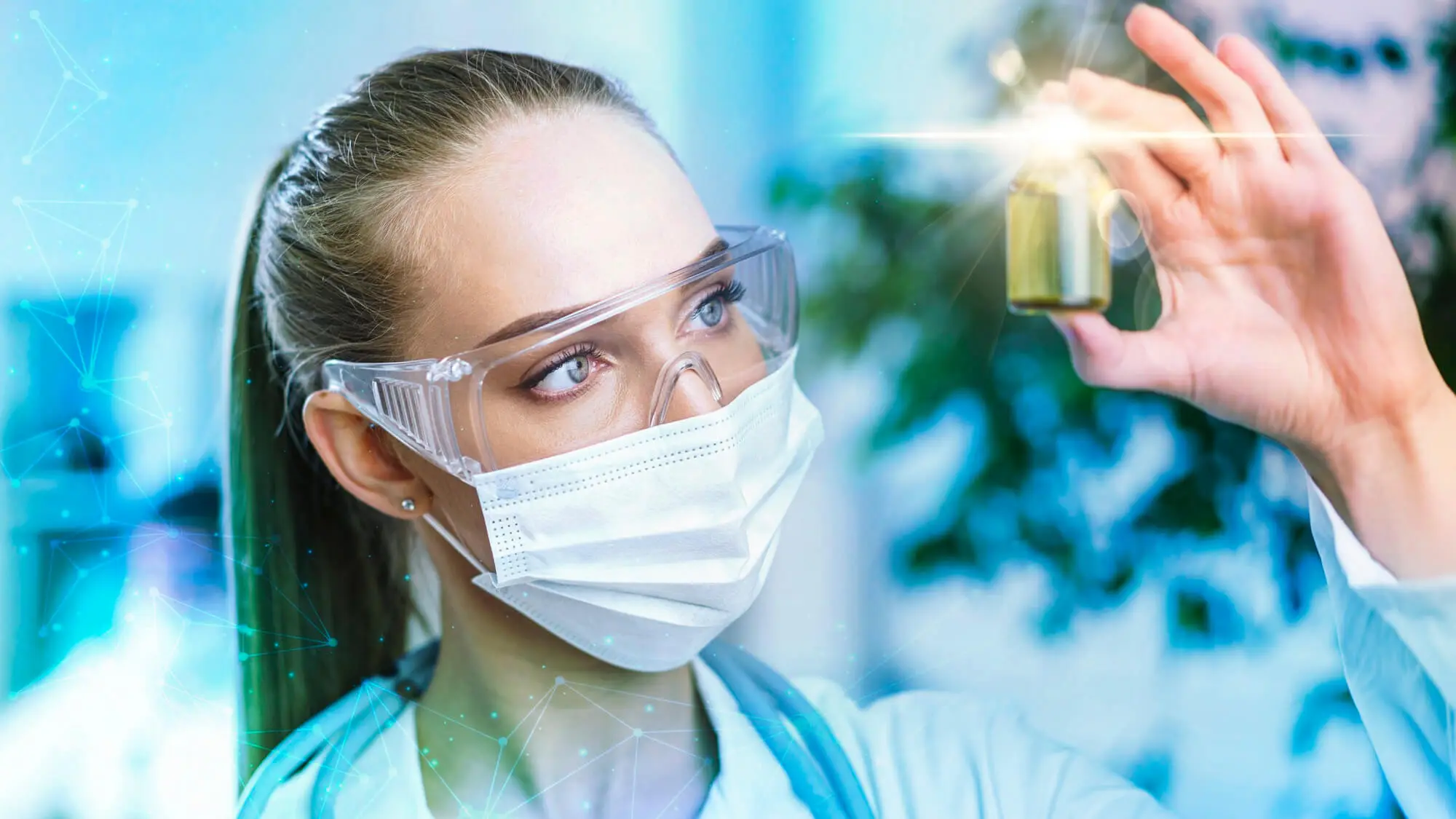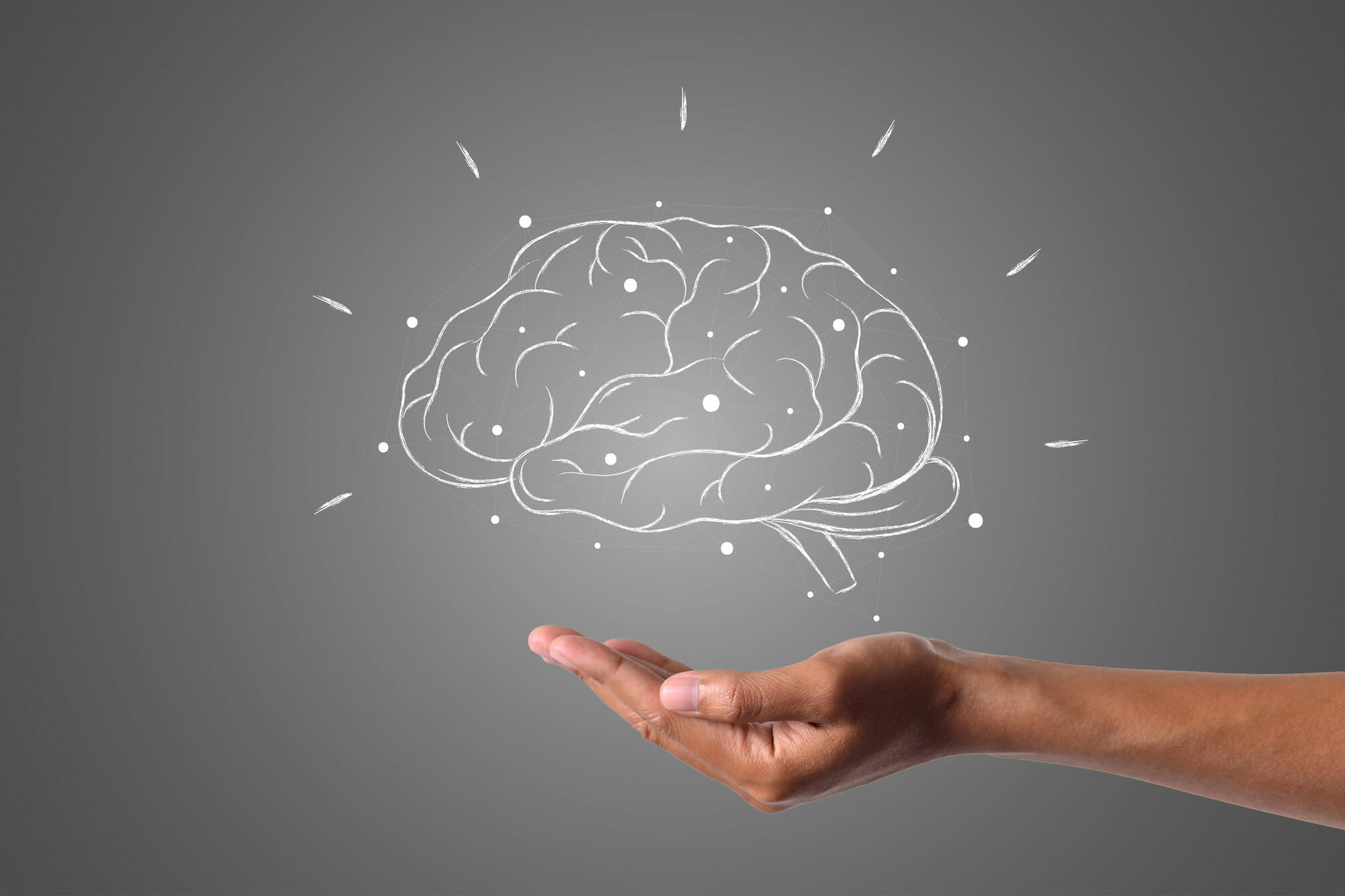Sergey Young is in no hurry to get old - Part 2
Longevity investor and best-selling author answers questions about his mission, research, and book

This is the second part of the interview with Sergey Young. If you haven't read the first part yet, you can here catch up.
CP: In your book The Science and Technology of Growing Young Present two future prospects - the Near horizon, which we could experience as early as 2025, and the Far horizonby letting us live up to 200 years.
Which of these areas in the chapter Near horizon, such as DIY diagnostics, precision medicine, genetic coding, etc., are developing the fastest?
And the second question is how will these breakthroughs be available and affordable for everyone?
SY: Great questions. When it comes to the most exciting areas of technology currently in development, there are actually three things that come to mind — one is genetic engineering therapy. I think it was around 20 years ago when they sequenced the human genome. This project took about 13 years and cost, if I'm not mistaken, 3 billion dollars. Now I can create a full sequence of my genome in a few hours for 100 dollars (or euros). That is great!
During my last investigation, I had complete genome sequencing carried out and it's amazing to know that we can either rule out entire areas of genetic risk or be aware that we have a genetic predisposition to a specific risk and can therefore get that risk under control much, much earlier.
Second, the organ regeneration And that Bioprinting organs. I don't know the statistics for Europe, but in the USA, 117,000 people are on the waiting list for donor organs and some people die while waiting. So we invested in a company that found a way to help 50 to 70 people with a donor liver. It is therefore no longer about a liver and a recipient, but a liver can help many other people by combining stem cells and regrowing parts of the organ.
This brings us to Affordability aspect Arrived. Today, the total cost of transportation, operation, and insurance in the USA is between 800,000 and 1,000,000 dollars. But if we can help 50 to 70 people with the same donor liver, then we can reduce costs by over 90%.
I am delighted that almost all of the technologies we invest in today are being used and will increase the chances for more and more people to access this type of treatment.
The third point that particularly appeals to me is Use of artificial intelligence in drug research. The discovery of drugs is an extremely expensive and lengthy process. In the USA, it takes around 12 years and costs a total of 2.6 billion dollars. And then only one out of 5,000 drug candidates makes it into pharmacies. That is absurd!
That is why we are currently investing in two companies that use artificial intelligence to shorten the first two years of drug research, during which the selection of molecules to be tested takes place. By combining artificial intelligence and human intelligence, they have succeeded in reducing these two years to two months and significantly reducing costs. That is remarkable. We're just at the beginning of the AI revolution in drug discovery and I'm really excited about the whole thing.
CP: You mention in your book that precision medicine, when mature, will identify potential “zero” diseases. Can you tell us more about that?
SY: Well, stage zero means that it is a very early stage when it (an abnormality) is discovered for the first time using precision medicine, i.e. before it can be seen in an MRI scan, for example. But we are also looking at the basic aging processes, because these processes are the biggest risk factors. It is very rare to develop diabetes, cancer, or heart disease at the age of 20 or 25. But when you turn 45 or 50, the aging clock in your body starts ticking very loudly, probably because we've completed our evolutionary program so that aging starts on a biological level. The likelihood of developing diseases increases 20-50 times from this age. We are therefore looking at the core of aging, i.e. we are no longer treating the symptoms of a specific disease, but the underlying aging process. If we can reverse it, we'll all be a younger, healthier, and happier version of ourselves.
CP: You describe in the chapter Far horizon, that humans and machines become one and we start to change our bodies, replace our vital organs and use even more brain-computer interfaces. Aren't you worried that these forecasts might sound like scary science fiction to many people?
SY: Yes, of course. But I think that what I'm in the chapter Distant horizon of longevity Describe - and remember the book is called The Science and Technology of Growing Young - that these are innovations that we will have access to in 25 to 50 years. So you don't have to be afraid right now.
The book consists of two chapters that deal with forecasts. It's about which technologies we will use in the future to live healthier and longer — I'll get back to the technology in a moment. The second part is the last chapter of the book entitled Morality of Immortality, which deals with the ethical aspect of this question.
We need to solve many ethical issues before we can get used to the idea of living longer.
If you ask people at an event whether they want to extend their lives for another 10 or 20 years, only one out of five will say yes. We have therefore succeeded in developing technologies and science to extend our lives. But we still haven't managed to create a life that all of us want to accept. So that is extremely important.
As far as technologies are concerned, the future is very interesting. I'm pretty sure our brains will be integrated with artificial intelligence and computing power. That is already the case today, isn't it? When I use my smartphone, it's just a lot of AI and processing power. I'm just using a very inefficient interface for that. I use my eyes to read, my fingers to type, or my ears to hear an audio message. There will therefore be more integration in this area. And it's already underway. I'm talking about various nanorobots that flow in our blood and will carry out diagnoses or even treatments.
If we're worried that we'll all be full of sensors, I can only say that many, like me, are already full of sensors today. I have a continuous glucose meter, an Apple Watch, and an Oura ring to monitor my sleep. I use these sensors to monitor my health and establish a feedback cycle that tells me to change my lifestyle and medical measures and live healthier.
Today we know the concept of the “Internet of Things”; in the future, it will be the “Internet of Bodies.” We're all going to be connected. We're all connected to each other today, we only use very inefficient interfaces.
I can praise all of this and paint a positive picture of future technologies and scientific breakthroughs. However, it is important that we solve social inequality and economic problems around the world and shape the ethics of our lives in such a way that we can live longer.
CP: You seem to be very optimistic about all of these developments. Where do you see limits?
SY: Well, the biggest restrictions are on two fronts — one is regulation. There are so many things we need to do on the regulatory front that aging isn't considered a disease. Many people simply don't invest in aging research or in technologies that help us reverse aging because there is no economic model supported by regulators around the world to address these dangerous and damaging mechanisms in our bodies.
The second aspect is again the social ethics, and this is also about regulation. We are so afraid of new technologies and the world is so inefficient and sometimes unfair when it comes to inequalities and social differences. Many people are afraid that this multi-million dollar solution will only be available to rich people and that the rest of the world will still suffer. Well, the good news is that we're working hard on the accessibility aspect. Every company we invest in aims to improve costs by 20 to 50 times compared to current practice. But there is still a long way to go before society accepts the idea of living longer.
CP: How can we as individuals contribute to the longevity revolution?
SY: I think on two fronts. First of all, I think it is time to to understand your own health and take responsibility for it. Because think about the fact that we now delegate all of our health decisions to other bodies, such as regulators, big pharmaceuticals, hospitals, and governments. And we expect someone else to take care of my health. Well, yes and no, but you need to be part of that dialogue, right? You must take responsibility, after all, it is your body, your health and your life!
CP: You must be the CEO of your own health.
SY: That's a great metaphor. Thank you Carola. So that's the one thing. Second, one should start researching and applying the field of longevity. There are so many books out there on the subject. You can with David Sinclair's Lifespan start, or you can read what Ray Kurzweil wrote in Fantastic Voyage writes about this topic. You can also use my book with the title The Science and Technology of Growing Young start. I became famous in August 2021 with a book that I thought would be a niche book for people who really care about this topic. But it became a Wall Street Journal bestseller, a USA TODAY bestseller, and number one on Amazon. The easy-to-read 200 pages are about what we will experience in the future in terms of our ability to take control and responsibility for our health and what we should do today.
The most extensive chapter in the book is the bonus chapter. It is twice as long as any other chapter in the book and is dedicated to ten decisions for a long life that you can make today.
So stay healthy and happy and take responsibility for your own health and the health of your loved ones!
Here It's on to the first part of the interview with Sergey Young.
web page: www.sergeyyoung.com
book: https://amzn.to/3E8GWJF
Instagram: @sergeyyoung200
References
Publiziert
31.8.2024
Kategorie
Longevity

Experte
This is the second part of the interview with Sergey Young. If you haven't read the first part yet, you can here catch up.
CP: In your book The Science and Technology of Growing Young Present two future prospects - the Near horizon, which we could experience as early as 2025, and the Far horizonby letting us live up to 200 years.
Which of these areas in the chapter Near horizon, such as DIY diagnostics, precision medicine, genetic coding, etc., are developing the fastest?
And the second question is how will these breakthroughs be available and affordable for everyone?
SY: Great questions. When it comes to the most exciting areas of technology currently in development, there are actually three things that come to mind — one is genetic engineering therapy. I think it was around 20 years ago when they sequenced the human genome. This project took about 13 years and cost, if I'm not mistaken, 3 billion dollars. Now I can create a full sequence of my genome in a few hours for 100 dollars (or euros). That is great!
During my last investigation, I had complete genome sequencing carried out and it's amazing to know that we can either rule out entire areas of genetic risk or be aware that we have a genetic predisposition to a specific risk and can therefore get that risk under control much, much earlier.
Second, the organ regeneration And that Bioprinting organs. I don't know the statistics for Europe, but in the USA, 117,000 people are on the waiting list for donor organs and some people die while waiting. So we invested in a company that found a way to help 50 to 70 people with a donor liver. It is therefore no longer about a liver and a recipient, but a liver can help many other people by combining stem cells and regrowing parts of the organ.
This brings us to Affordability aspect Arrived. Today, the total cost of transportation, operation, and insurance in the USA is between 800,000 and 1,000,000 dollars. But if we can help 50 to 70 people with the same donor liver, then we can reduce costs by over 90%.
I am delighted that almost all of the technologies we invest in today are being used and will increase the chances for more and more people to access this type of treatment.
The third point that particularly appeals to me is Use of artificial intelligence in drug research. The discovery of drugs is an extremely expensive and lengthy process. In the USA, it takes around 12 years and costs a total of 2.6 billion dollars. And then only one out of 5,000 drug candidates makes it into pharmacies. That is absurd!
That is why we are currently investing in two companies that use artificial intelligence to shorten the first two years of drug research, during which the selection of molecules to be tested takes place. By combining artificial intelligence and human intelligence, they have succeeded in reducing these two years to two months and significantly reducing costs. That is remarkable. We're just at the beginning of the AI revolution in drug discovery and I'm really excited about the whole thing.
CP: You mention in your book that precision medicine, when mature, will identify potential “zero” diseases. Can you tell us more about that?
SY: Well, stage zero means that it is a very early stage when it (an abnormality) is discovered for the first time using precision medicine, i.e. before it can be seen in an MRI scan, for example. But we are also looking at the basic aging processes, because these processes are the biggest risk factors. It is very rare to develop diabetes, cancer, or heart disease at the age of 20 or 25. But when you turn 45 or 50, the aging clock in your body starts ticking very loudly, probably because we've completed our evolutionary program so that aging starts on a biological level. The likelihood of developing diseases increases 20-50 times from this age. We are therefore looking at the core of aging, i.e. we are no longer treating the symptoms of a specific disease, but the underlying aging process. If we can reverse it, we'll all be a younger, healthier, and happier version of ourselves.
CP: You describe in the chapter Far horizon, that humans and machines become one and we start to change our bodies, replace our vital organs and use even more brain-computer interfaces. Aren't you worried that these forecasts might sound like scary science fiction to many people?
SY: Yes, of course. But I think that what I'm in the chapter Distant horizon of longevity Describe - and remember the book is called The Science and Technology of Growing Young - that these are innovations that we will have access to in 25 to 50 years. So you don't have to be afraid right now.
The book consists of two chapters that deal with forecasts. It's about which technologies we will use in the future to live healthier and longer — I'll get back to the technology in a moment. The second part is the last chapter of the book entitled Morality of Immortality, which deals with the ethical aspect of this question.
We need to solve many ethical issues before we can get used to the idea of living longer.
If you ask people at an event whether they want to extend their lives for another 10 or 20 years, only one out of five will say yes. We have therefore succeeded in developing technologies and science to extend our lives. But we still haven't managed to create a life that all of us want to accept. So that is extremely important.
As far as technologies are concerned, the future is very interesting. I'm pretty sure our brains will be integrated with artificial intelligence and computing power. That is already the case today, isn't it? When I use my smartphone, it's just a lot of AI and processing power. I'm just using a very inefficient interface for that. I use my eyes to read, my fingers to type, or my ears to hear an audio message. There will therefore be more integration in this area. And it's already underway. I'm talking about various nanorobots that flow in our blood and will carry out diagnoses or even treatments.
If we're worried that we'll all be full of sensors, I can only say that many, like me, are already full of sensors today. I have a continuous glucose meter, an Apple Watch, and an Oura ring to monitor my sleep. I use these sensors to monitor my health and establish a feedback cycle that tells me to change my lifestyle and medical measures and live healthier.
Today we know the concept of the “Internet of Things”; in the future, it will be the “Internet of Bodies.” We're all going to be connected. We're all connected to each other today, we only use very inefficient interfaces.
I can praise all of this and paint a positive picture of future technologies and scientific breakthroughs. However, it is important that we solve social inequality and economic problems around the world and shape the ethics of our lives in such a way that we can live longer.
CP: You seem to be very optimistic about all of these developments. Where do you see limits?
SY: Well, the biggest restrictions are on two fronts — one is regulation. There are so many things we need to do on the regulatory front that aging isn't considered a disease. Many people simply don't invest in aging research or in technologies that help us reverse aging because there is no economic model supported by regulators around the world to address these dangerous and damaging mechanisms in our bodies.
The second aspect is again the social ethics, and this is also about regulation. We are so afraid of new technologies and the world is so inefficient and sometimes unfair when it comes to inequalities and social differences. Many people are afraid that this multi-million dollar solution will only be available to rich people and that the rest of the world will still suffer. Well, the good news is that we're working hard on the accessibility aspect. Every company we invest in aims to improve costs by 20 to 50 times compared to current practice. But there is still a long way to go before society accepts the idea of living longer.
CP: How can we as individuals contribute to the longevity revolution?
SY: I think on two fronts. First of all, I think it is time to to understand your own health and take responsibility for it. Because think about the fact that we now delegate all of our health decisions to other bodies, such as regulators, big pharmaceuticals, hospitals, and governments. And we expect someone else to take care of my health. Well, yes and no, but you need to be part of that dialogue, right? You must take responsibility, after all, it is your body, your health and your life!
CP: You must be the CEO of your own health.
SY: That's a great metaphor. Thank you Carola. So that's the one thing. Second, one should start researching and applying the field of longevity. There are so many books out there on the subject. You can with David Sinclair's Lifespan start, or you can read what Ray Kurzweil wrote in Fantastic Voyage writes about this topic. You can also use my book with the title The Science and Technology of Growing Young start. I became famous in August 2021 with a book that I thought would be a niche book for people who really care about this topic. But it became a Wall Street Journal bestseller, a USA TODAY bestseller, and number one on Amazon. The easy-to-read 200 pages are about what we will experience in the future in terms of our ability to take control and responsibility for our health and what we should do today.
The most extensive chapter in the book is the bonus chapter. It is twice as long as any other chapter in the book and is dedicated to ten decisions for a long life that you can make today.
So stay healthy and happy and take responsibility for your own health and the health of your loved ones!
Here It's on to the first part of the interview with Sergey Young.
web page: www.sergeyyoung.com
book: https://amzn.to/3E8GWJF
Instagram: @sergeyyoung200
Experte
Referenzen
Publiziert
31.8.2024
Kategorie
Longevity

.svg)














